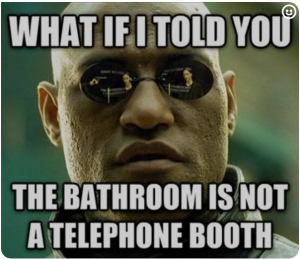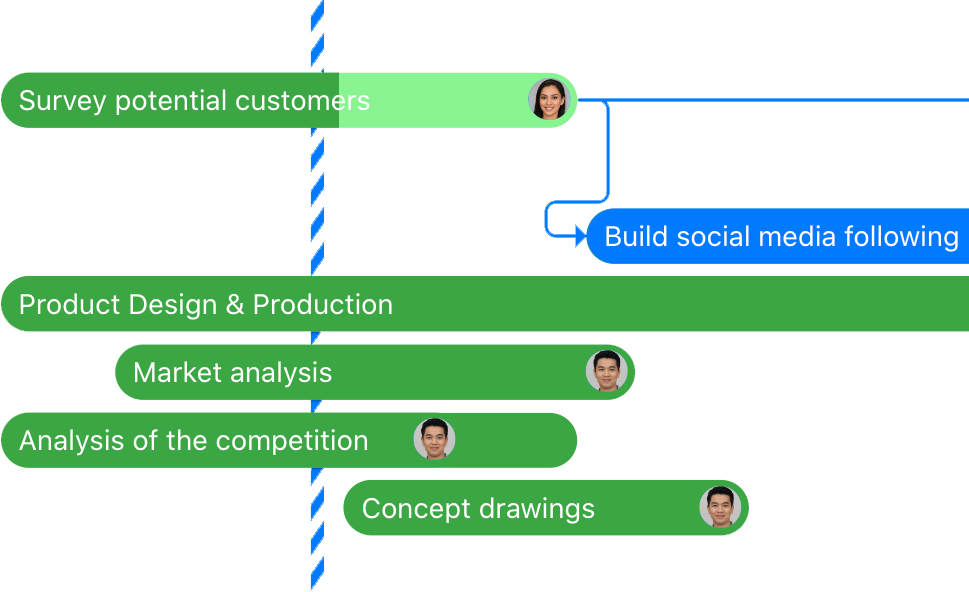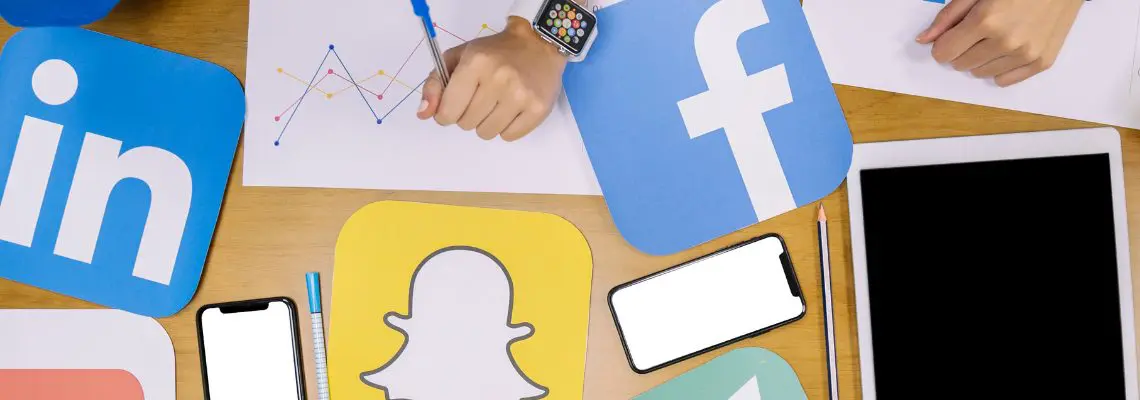How “Social Media Breaks” Can Boost Employee Morale
Like the conventional smoke break, here's why you should allocate time for personal social media use in the workplace
“Connectivity is a human right.” – Mark Zuckerberg
It’s not every day I agree with Zuckerberg, but today, when I read this quote, I found myself concurring.
Every human has the right to connect with others, and nothing connects us more than social media, so why shouldn’t we be allowed to log on during work hours?
I know this topic is constantly being discussed and debated within companies. On one side, employers are worried about distraction and productivity declining, on the other side, social media can be very beneficial for business. There’s also the argument that even without social media, employees will still find ways to waste time at work.
Taking all this into consideration, I came up with a be-all and end-all solution. Heck, I think I even invented it!*
“Social media breaks.” (Yes, the quotation marks are there on purpose.)
When I say “social media breaks”, I don’t mean the kind where you stop using your phone for a certain amount of time because you need a break from it. I mean the type where, like the conventional cigarette break (or “smoko” in my local Aussie dialect), we employees get an allocated break time, separate from our regular lunch break, to feed our social media compulsions. Maybe we could dub it “SoMo” or something?
Hear me out.
Social media is excellent for staying in touch with friends and family, connecting with industry peers and leaders, and for receiving information and news updates from all over the globe. But for many of us workers, we are prevented from using it during work hours.
One in three workers in the United States are millennials, and millennials make up the majority of social media users out there. So, when you think about it, that’s a lot of disconnection going on during the hours of 9 to 5.
I believe that if managed properly, personal social media usage could actually be a win-win situation for everyone involved. Here’s how the idea of “social media breaks” came about…
This morning at work, our office manager sent a company-wide message advising the team to avoid bringing their smartphones into the bathroom. I realized she did this as an attempt to resolve the issue of the long bathroom waits our office had been experiencing lately.
Careful observation suggested the reason why several staff members were spending a prolonged amount of time in the bathroom—and blocking others from using it—was because they were taking their phones in with them. With people taking their smartphones into the bathroom, this was a sure sign that they wanted time to check their social media and/or other personal online activities.

If staff members were allocated time to check their social media during work hours, this could reduce the prospect of people taking their phones into the bathroom. Which could resolve the issue of long bathroom waits.
Assessing the Pros and Cons of Social Media in the Workplace
While the incident that happened at the Zenkit HQ may be an exception, I’m sure there are other companies that would also benefit from allowing personal social media usage. To see if this is something your business could implement, let’s start off by dissecting the common benefits and disadvantages that would come along with it.
Pros:
- Upskill your employees
Navigating social media platforms requires a certain level of technical capability. Using social media at work can help develop skills and knowledge that could be of benefit to the company. It can also be a great source of inspiration for those working within the creative industry. Platforms like Pinterest and Instagram are excellent for overcoming creative blocks.
- Stay in the loop
Staying connected with industry peers, leaders, and businesses means you’ll always be in the know about what’s going on within your line of work. You can take advantage of LinkedIn articles and groups for this kind of knowledge, as well as Twitter, which can be a great platform if you follow the right people and brands.
- Brand exposure
Every small to medium-sized business and startup knows how crucial creating an online presence is. But while websites often come with a price tag, social media platforms such as Facebook and LinkedIn are simple and cost-effective. Optimized and updated profiles and company pages can increase visibility and brand awareness. Having your employees consistently present in these online spaces can also give your company great exposure.
Cons:
- Distracts people from tasks
The most common reason why employers are reluctant to allow personal social media usage at work is that it can be distracting. From memes on FaceBook to trending topics on Twitter to 1-minute recipe videos on Instagram, social media apps offer a world of distraction that can shift the focus away from tasks, and make things run less efficiently.
- Kills productivity
With technological distractions readily available, permitting personal social media usage during work hours could prove to become a productivity killer. Research has found that companies who enable this kind of access could lose an average of 1.5% in total employee productivity.

- Personal matter becomes a work problem
There is a time and place for social media but granting employees access to their personal accounts while at work could lead to improper use of it. Social media is a hub for misleading information, harassment, and bullying. And should an unfavourable situation arise while an employee is on social media at work, it could then become an issue for your business.
Employees Will Always Find a Way to Log on
My takeaway from considering both sides of the equation, as well as personal experience, is that regardless of whether social media usage is permitted during work hours, employees are still going to find a way to log on. The only way employers can stop employees from accessing social media platforms is to restrict it on company computers. But people will still have their own devices.
If the biggest obstacle to overcome is the distraction social media may bring then you have to understand that there will always be employees who waste time. The fact that people still found ways to slack off during work hours long before social media was introduced into the world goes to show that this isn’t a social media issue, it’s a management one.

Social media is so ubiquitous that you really can’t stop people from going online. It’s been said that our dependency on it is worse than cigarette addiction. So, instead of banning it and making employees go behind your back, employers should embrace social media and manage how it gets used in the office.
A Worse Addiction than Cigarettes
“Checking your likes is the new smoking.” – Bill Maher
Social media apps are designed with optimal user engagement in mind. The creator of the Moment app, Kevin Holesh, has stated in an article for Science Focus, “social media isn’t designed with your long-term happiness in mind: it’s designed to capture as much of your attention as possible right now.”
With over 2 billion Facebook users, 1 billion Instagram users, and 330 million Twitter users as of April, 2019, it appears the social media app design strategy is working. But how much engagement is too much?
Social media addiction isn’t a formally recognized disease or disorder, however, there’s no denying the effects of excessive use. Behaviours such as feeling anxious when you’re unable to check your accounts over a significant period of time or browsing a platform for hours on end with no specific reason in mind are examples of what too much social media can do to you. There are even studies that link excessive use to mental health issues such as depression and loneliness.
But if it’s detrimental, then why should it be encouraged in the workplace, you ask?
Well, just like cigarette addiction, if you deny people the opportunity to feed their cravings, then it could result in a worse outcome. If people can’t get their fix, they’ll be too preoccupied thinking about it. This could then lead to not being able to focus at work and being less productive.
And if the effects start to impact how people work, then introducing some kind of policy that allows employees to go online is definitely something worth considering.
“Social Media Breaks”
Until there are patches or chewing gum available to alleviate our social media compulsions, another way that can help take the edge off is to implement “social media breaks” within the workplace.
The idea of a “social media break” parallels that of the traditional smoke break. To break up the 8 hour work day, you can allocate about 10-15 minutes, twice, thrice, or however many times you want, a day to allow employees to disconnect from their work and connect to their online existence.
There, of course, should be some restrictions imposed in order for it to work. For instance, you could create a designated area where employees have to go to if they want to check their phones. Just like a designated smoking area outside, not only will an appointed area for personal social media usage prevent employees from checking the platforms on their work computers, but it also gives them a chance to step away from their desks so they can take a proper break.

Managing how and when employees go on social media can stop them from sneakily logging into their accounts while they’re supposed to be working on their tasks. If people know they have an allocated time to check their social media, it would reduce the chances of them going online continuously throughout the day.
Can it Work?
Yes, it can. Here’s how…
According to data from the National Health Interview Survey (NHIS), cigarette smoking among adults in the US has declined from 20.9% in 2005 to 15.5% in 2016. Whether due to the smoking bans implemented in the past 10 years, or the effect of health and wellness lifestyle trends, people are smoking less, which means the demand for designated smoke breaks at work isn’t as widespread today as it was before.
On the flip side, people using social media are on the rise. Statistics highlight how the amount of users worldwide has increased since 2010, and how it may continue to ascend until 2021.
If employers are already consenting to smoke breaks to upkeep morale and to enable employees to feed their addictions, then why not do the same for employees who want to fulfil their social media compulsions?
By acknowledging social media dependency as a real thing, you could then start to understand why implementing breaks catered to platform perusing could actually be beneficial for your company.
Final Thoughts
Social media usage has become as much of a daily norm as smoking. So, if there are standards in the workplace that accommodate smokers, then there’s no reason why the same can’t be applied to social media users.
Implementing “social media breaks” not only means your employees will get their fix, but it could also prevent distractions and time-wasters. Allocating time to allow people to go online could mean they won’t be so inclined to constantly check their accounts during work time and can put their full focus on their tasks. And there won’t be any queues for the bathroom!
Do you think “social media breaks” would work in your office? Let us know in the comment section below.
Cheers,
Dinnie and the Zenkit Team
* After doing an extensive Google search for “social media breaks”, I didn’t find anything that referred the term to the designated social media-break time-at-work that I’ve suggested. If I’m mistaken, then please, let me know.
FREE 20 MIN. CONSULTATION WITH A PROJECT MANAGEMENT EXPERT
Wanna see how to simplify your workflow with Zenkit in less than a day?
Book a Live Demo

Great Job! Such a good article.